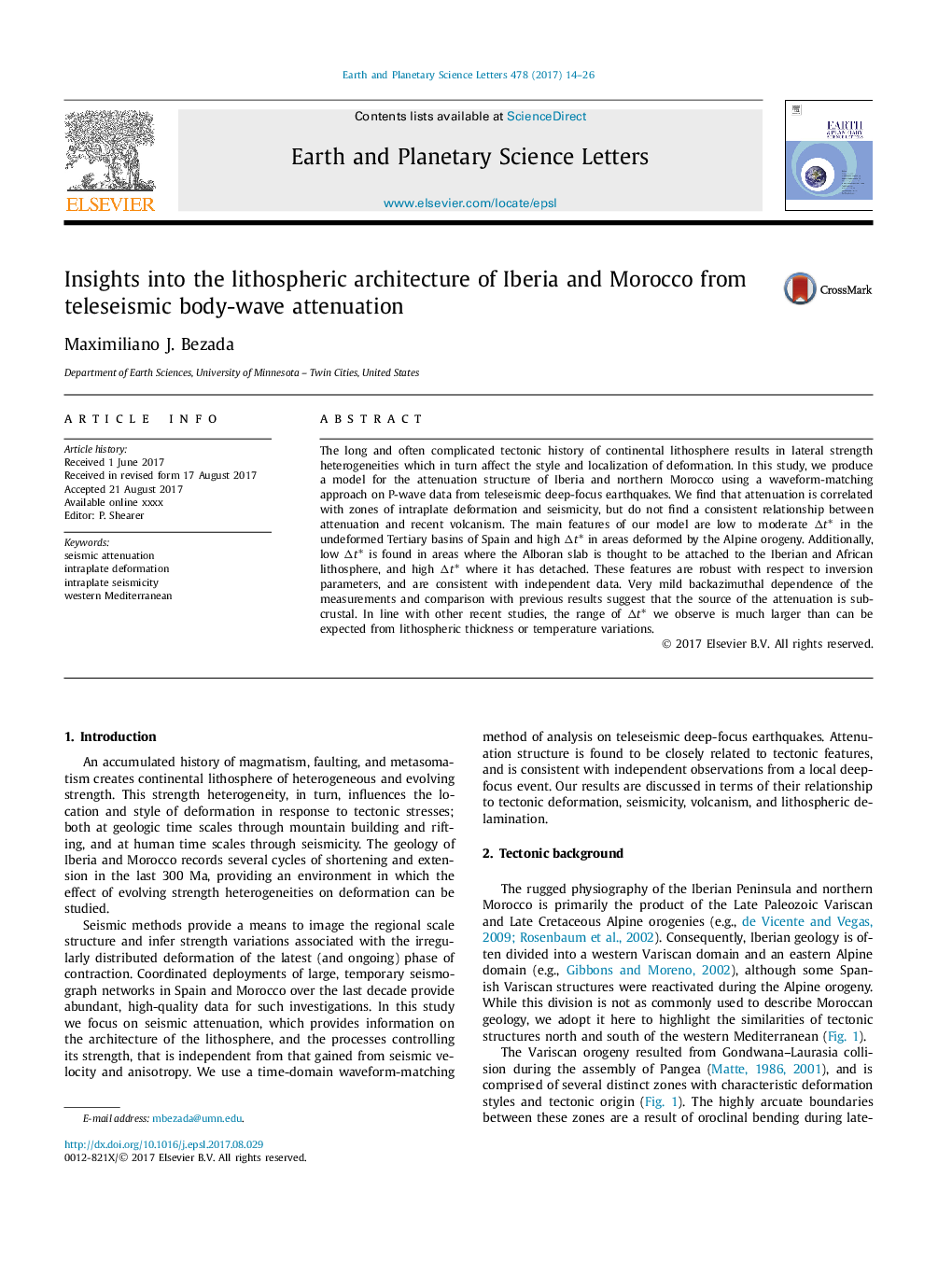| Article ID | Journal | Published Year | Pages | File Type |
|---|---|---|---|---|
| 5779551 | Earth and Planetary Science Letters | 2017 | 13 Pages |
Abstract
The long and often complicated tectonic history of continental lithosphere results in lateral strength heterogeneities which in turn affect the style and localization of deformation. In this study, we produce a model for the attenuation structure of Iberia and northern Morocco using a waveform-matching approach on P-wave data from teleseismic deep-focus earthquakes. We find that attenuation is correlated with zones of intraplate deformation and seismicity, but do not find a consistent relationship between attenuation and recent volcanism. The main features of our model are low to moderate Îtâ in the undeformed Tertiary basins of Spain and high Îtâ in areas deformed by the Alpine orogeny. Additionally, low Îtâ is found in areas where the Alboran slab is thought to be attached to the Iberian and African lithosphere, and high Îtâ where it has detached. These features are robust with respect to inversion parameters, and are consistent with independent data. Very mild backazimuthal dependence of the measurements and comparison with previous results suggest that the source of the attenuation is sub-crustal. In line with other recent studies, the range of Îtâ we observe is much larger than can be expected from lithospheric thickness or temperature variations.
Related Topics
Physical Sciences and Engineering
Earth and Planetary Sciences
Earth and Planetary Sciences (General)
Authors
Maximiliano J. Bezada,
